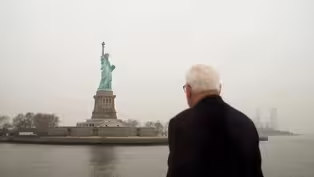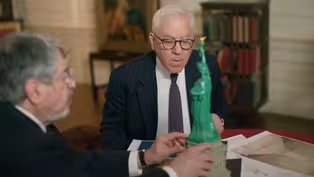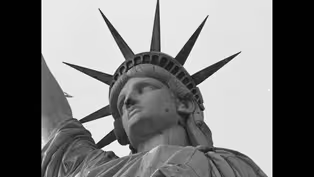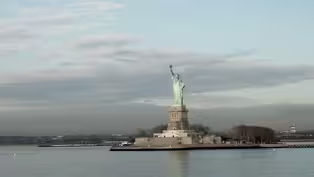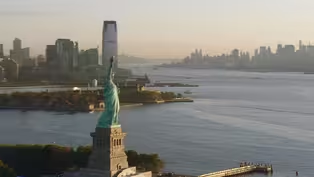
"Their Immigration Story Becomes the Story of Their Life"
Clip: Episode 5 | 2m 45sVideo has Closed Captions
David Rubenstein visits Ellis Island with Atlantic writer Caitlin Dickerson.
David Rubenstein visits Ellis Island with Atlantic writer Caitlin Dickerson and discusses the history of the facility, from immigration hub to detention center, and the daunting reality facing many of the immigrants who left everything they had known to seek out a better existence in America.
Problems playing video? | Closed Captioning Feedback
Problems playing video? | Closed Captioning Feedback
Iconic America: Our Symbols and Stories with David Rubenstein is a production of Show of Force, DMR Productions, and WETA Washington, D.C. David M. Rubenstein is the host and executive...

"Their Immigration Story Becomes the Story of Their Life"
Clip: Episode 5 | 2m 45sVideo has Closed Captions
David Rubenstein visits Ellis Island with Atlantic writer Caitlin Dickerson and discusses the history of the facility, from immigration hub to detention center, and the daunting reality facing many of the immigrants who left everything they had known to seek out a better existence in America.
Problems playing video? | Closed Captioning Feedback
How to Watch Iconic America
Iconic America is available to stream on pbs.org and the free PBS App, available on iPhone, Apple TV, Android TV, Android smartphones, Amazon Fire TV, Amazon Fire Tablet, Roku, Samsung Smart TV, and Vizio.
Buy Now
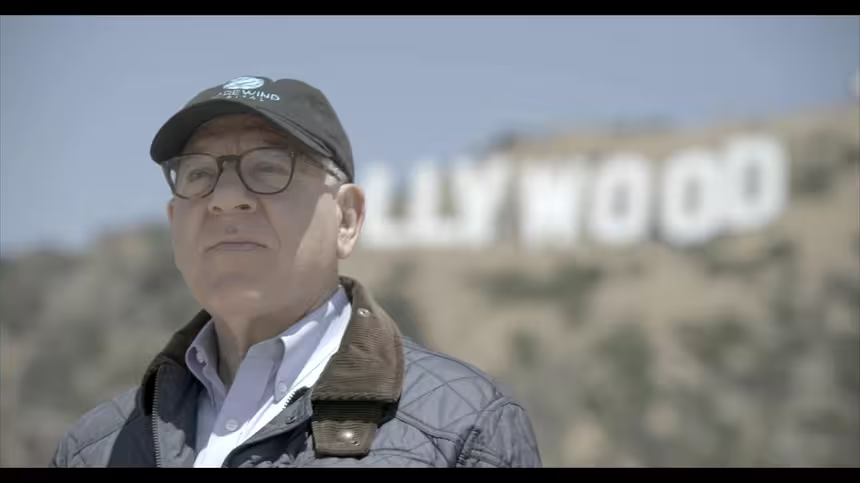
Our Symbols and Stories
David Rubenstein examines the history of America through some of its most iconic symbols, objects and places, in conversation with historical thinkers, community members and other experts. Together, they dive deep into each symbol’s history, using them as a gateway to understanding America’s past and present.Providing Support for PBS.org
Learn Moreabout PBS online sponsorship(pensive music) (boat whistling) (person running) (pensive music) (indistinct talking) - [David] When did they stop using Ellis Island as a immigration center?
- [Caitlin] By the '30s, Ellis Island was primarily a detention center and then I think it was the mid-'50s when they shut it down completely.
And then it was vacant for several years before.
- So from this amazing building in Ellis Island, you can see the Statue of Liberty.
- Yeah.
Wow.
Definitely one of the most well-known icons in the United States.
Probably the most well known.
It's interesting.
She is a very powerful symbol.
She's not in Central Park, she's not downtown.
She's actually on the water, literally welcoming people and holding up a torch as if to say, "Come on in.
I'll show you the way."
I think, the way that the statue looks and what it says just lends itself to this immigration narrative so easily that it was co-opted.
- Right.
- Shall we?
(tranquil music) (footsteps walking) What's interesting about these pictures to me is that they really showcase how difficult the immigration story is.
So often it's glossed over and kind of romanticized in the way that we tell it but you can see in people's faces, I mean, they look exhausted, they look really run down, and yet, at the same time, you also see people who looked like they wore their very best clothes to come to the United States.
(pensive music) - I can't imagine how those circumstances were on the boat.
I assume they weren't exactly in first class.
- Right.
- Interestingly, today, when people have pictures taken of them, they generally smile but you don't see people smiling so much in these pictures.
When you think about it, you've lived your whole life in a country and all of a sudden, you're picking up, taking whatever possessions you have with you.
You're going to another country you've never been to before.
In some case, you have no relatives there.
It's a pretty daunting experience, and I don't know whether I would've done it in the same circumstances.
- I don't know whether I would have either.
I mean, immigrating, often it becomes the defining feature of a person's life, especially those who feel like they've done it because they have no other choice.
Their immigration story becomes the story of their life.
- Right.
(pensive music)
A Catalyst for Reflection on Our Past Transgressions
Video has Closed Captions
Clip: Ep5 | 1m 6s | Poet Laureate Tracy K. Smith reflects on Lady Liberty's potential as an agent of change. (1m 6s)
Video has Closed Captions
Clip: Ep5 | 3m 56s | America's greatest symbol has its roots in a small town in France, 300 miles from Paris. (3m 56s)
How the Statue of Liberty's Anti-Slavery Origins Evolved
Video has Closed Captions
Clip: Ep5 | 3m 41s | A look at how Lady Liberty's anti-slavery origins and design changed over time. (3m 41s)
A Poem for All Americans, About Immigration
Video has Closed Captions
Clip: Ep5 | 55s | A look at how the poem, "The New Colossus" came to be engraved on the Statue of Liberty. (55s)
Video has Closed Captions
Preview: Ep5 | 31s | It's hard to argue that there's a more iconic symbol of America than the Statue of Liberty (31s)
Video has Closed Captions
Clip: Ep5 | 47s | David Rubenstein asks Professor Ed Berenson why Lady Liberty is a symbol of America. (47s)
Providing Support for PBS.org
Learn Moreabout PBS online sponsorshipSupport for PBS provided by:
Iconic America: Our Symbols and Stories with David Rubenstein is a production of Show of Force, DMR Productions, and WETA Washington, D.C. David M. Rubenstein is the host and executive...
